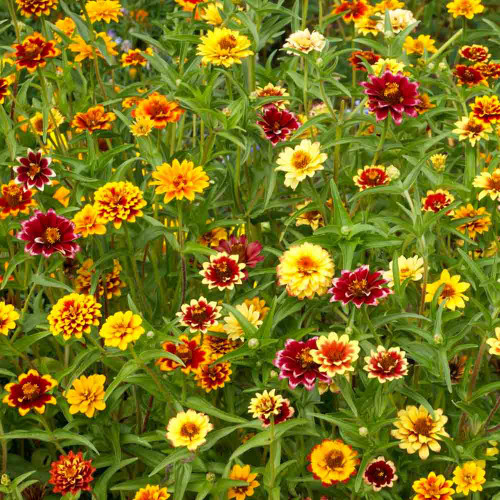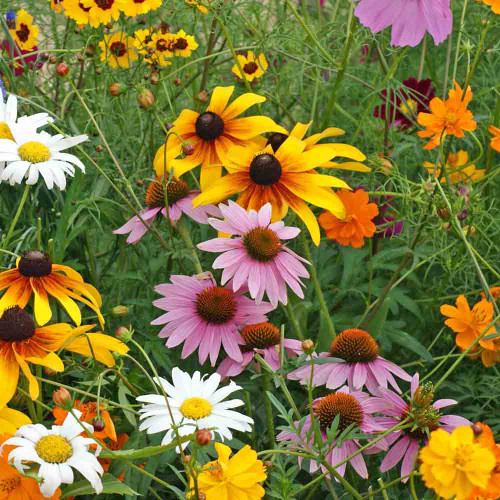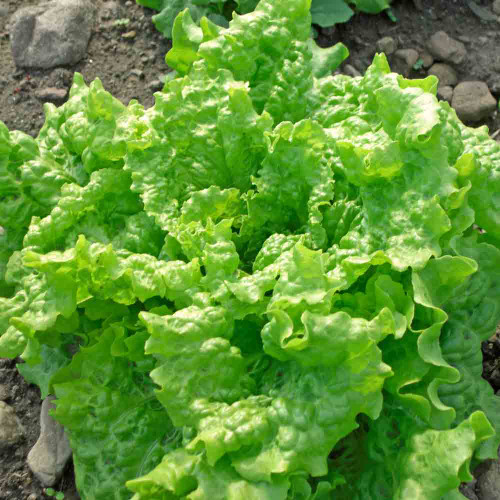Description
Peruvian Zinnia - This Fiery Jewel is a Pollinator Paradise
A magnet for pollinators and a champion of hardiness, Peruvian Zinnia is a radiant beauty that thrives where other zinnias falter and brings a touch of the exotic to any landscape. This exquisite annual showcases a profusion of small, single, daisy-like flowers. With its low-maintenance nature and ability to transform your garden into a haven for buzzing bees and fluttering butterflies, Peruvian Zinnia is an excellent choice for any gardener.
Details
Appearance
Belonging to the Asteraceae family, known as the aster, daisy, or sunflower family, Peruvian Zinnia typically grows as an upright annual, reaching heights of 6 inches to 3 feet with a spread of 1 to 2 feet. The rough stems, covered in fine hairs, often take on a purplish hue as they mature. The leaves are typically green, providing a contrasting backdrop for the vibrant flowers. They grow on opposite sides of the stem, attaching directly to the stem without a stalk. The plant has a short taproot system, generally growing in the top 12 to 24 inches of soil.
Flowers
The flowers are the star attraction, growing in single blooms in warm shades of orange at the stem's end, measuring 1 to 3 inches across. The vibrant flowers are highly attractive to a variety of pollinators, including bees, butterflies (specifically the Queen, Zebra Longwing, and Leptophobia aripa butterflies), and hummingbirds. It is an excellent choice for gardeners who want to support biodiversity and create a pollinator-friendly garden.
Growth Habit
It is hardy in USDA Hardiness Zones 3-10, and once established, it can tolerate periods of dryness. This makes it perfect for xeriscaping or water-wise gardening in a wide range of climates. The flowers readily self-seed, ensuring a continuous display of flowers year after year in beds, borders, containers, and naturalized wildflower patches.
History
The genus Zinnia was named in honor of Johann Gottfried Zinn, a German botanist, and anatomist who made significant contributions to understanding the human eye and the field of botany. In addition to his pioneering eye research, Zinn became the director of the University Botanical Garden in Göttingen at 26, expanding the garden's collection, introducing foreign plant species, and documenting their characteristics.
He played a crucial role in introducing the zinnia to Europe. Johann Gottfried Zinn received zinnia seeds from the German ambassador to Mexico, cultivated the plants, and meticulously described and illustrated them. He shared seeds with other botanists, contributing to its spread and popularity.
The species name "peruviana" refers to Peru, although the plant's native range extends beyond Peru into South America, including Argentina, up through all of Mexico, and north into southeastern Arizona.
Uses
Mostly grown as an ornamental plant to add a splash of color to gardens and landscapes while attracting multiple pollinators, Peruvian Zinnia’s long blooming season, from summer through fall, provides continuous color and visual interest. The flowers are also excellent for cutting and drying, making them popular for bouquets and arrangements.
Companion Planting
Companion planting involves strategically placing different plants near each other to enhance growth, deter pests, or attract beneficial insects.
Beneficial pairings for Peruvian Zinnia include marigolds, which repel nematodes and other soil pests, and nasturtiums, which attract beneficial insects like ladybugs and lacewings that prey on aphids.
However, avoid planting potatoes near zinnias, as they can share diseases such as blight and wilt.
Planting Tips
Peruvian Zinnia is relatively easy to grow from seed. Sow seeds directly into the garden after the last frost when the soil has warmed, or start them indoors 4-6 weeks before the last frost and transplant after. Space plants 12 to 36 inches apart to ensure proper air circulation and prevent powdery mildew. Water regularly, allowing the soil to dry slightly between waterings. For optimal growth, apply a balanced fertilizer with a higher phosphorus content once a month, but avoid over-fertilizing. Amend heavy soil with compost or sand to improve drainage. Finally, remove faded flowers to encourage continuous blooming, and plant seeds 1/4" deep for germination in 4-6 days at temperatures between 70-95°F.
Bring the vibrant beauty of Peruvian Zinnia to your garden today!















